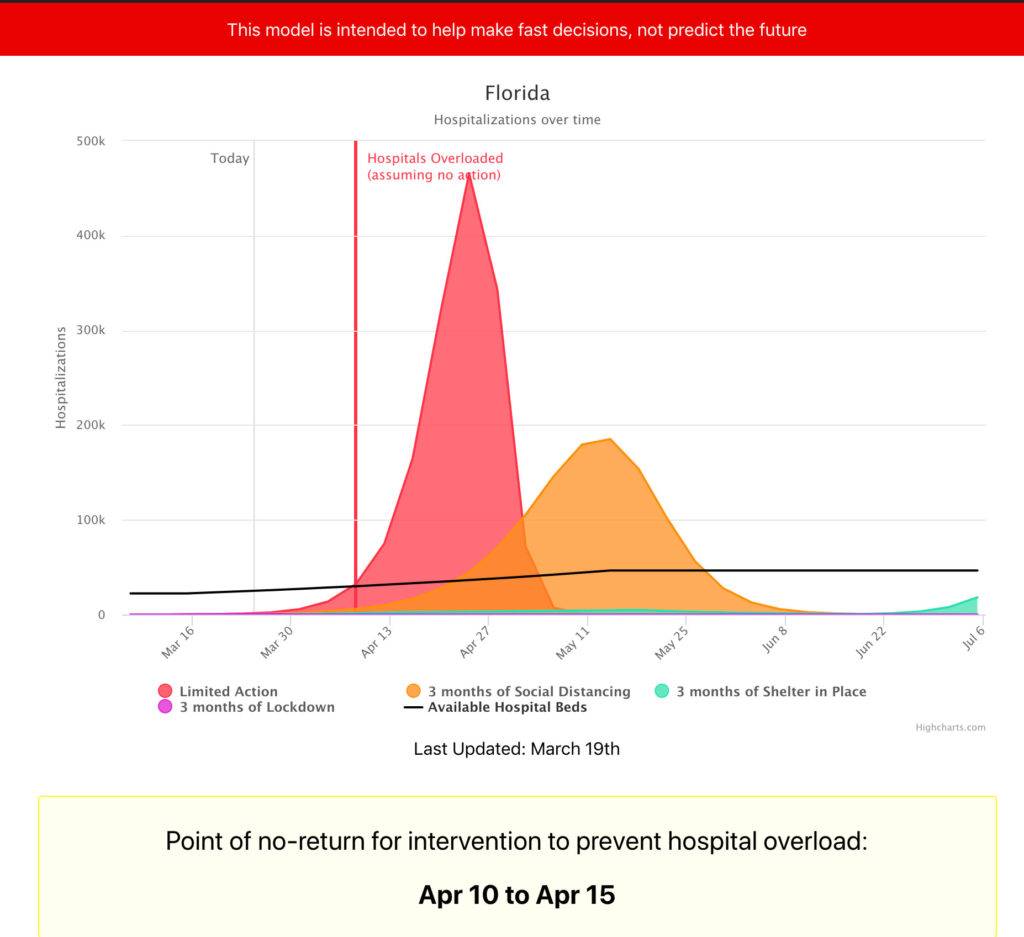Florida may have only 1 week to contain COVID-19 according to new statistical model
DORAL, FL – Just a day after Gov. Ron DeSantis had announced his decision of not imposing a total lock down in Florida under the premise that many counties have zero or few cases reported, several public health experts are pointing out to a new statistical model that shows Florida may have only one week (by March 30) to contain the virus before hospitals may be overwhelmed.
“It is past time to intervene to slow transmission [in Florida],” said Marc Lipsitch, professor of epidemiology at Harvard T.H. Chan School of Public Health in a call with reporters on Monday, as informed by the Miami Herald.
The model tool, named COVID Act Now and created by a team of data scientists, epidemiologists, public health officials and political leaders, shows the impact of the virus in certain regions of the country considering government interventions and the number of hospital beds in each state to estimate the number of hospital beds needed and the number of deaths expected.
The new statistical model predicts 465,699 people will be hospitalized because of COVID-19 by April 24, but there will only be 36,384 hospital beds available by that date in the state.
It also shows how three months of social distancing could flatten the curve, while three months of shelter in place could flatten it even more. Finally, it shows a “Wuhan-style lockdown” has the potencial of putting the curve almost completely flat.
The model updates every four days and it gives the date of the “point of no-return” for state intervention to prevent hospital overload, as seen in the next graphic.
 All public health officials agree that in order to slow down transmission, the real solution is to minimize contact.
All public health officials agree that in order to slow down transmission, the real solution is to minimize contact.
They also agree on the fact that delays in testing and shortage of swabs and reagents is causing that testing is happening “too little too late.”
Dr. Antony Friedman, an emergency department physician with Baptist Health South Florida, said to the Miami Herald doctors have seen a wave of “seriously ill” patients with fever, cough and respiratory symptoms and a “dramatic increase in younger, healthier people, from 20-50 age groups.”
“It’s definitely abnormal,’’ he said.
His opinion matches with that of more than 75 emergency room doctors, nurses and physicians’ assistants that wrote an open letter yesterday to Miami-Dade County pleading with them to stay home.
The real problem, however, is many people are not complying to the recommendation of limiting human contact to the maximum, which increases the chances of having a bigger health crisis in the near future as announced by the World Health Organization this Tuesday.
The organization predicted United United could become the global epicenter of the coronavirus pandemic as it is rapidly increasing its number of cases and fatal victims. As of March 24, COVID-19 has infected at least 49,200 people and killed 593 across the country.
With information of Miami Herald, Reuters and Business Insider.
